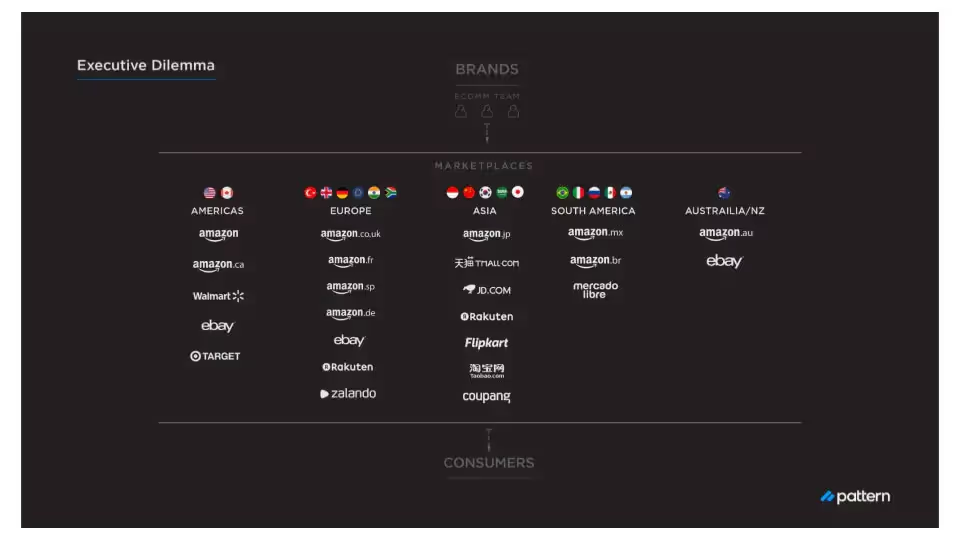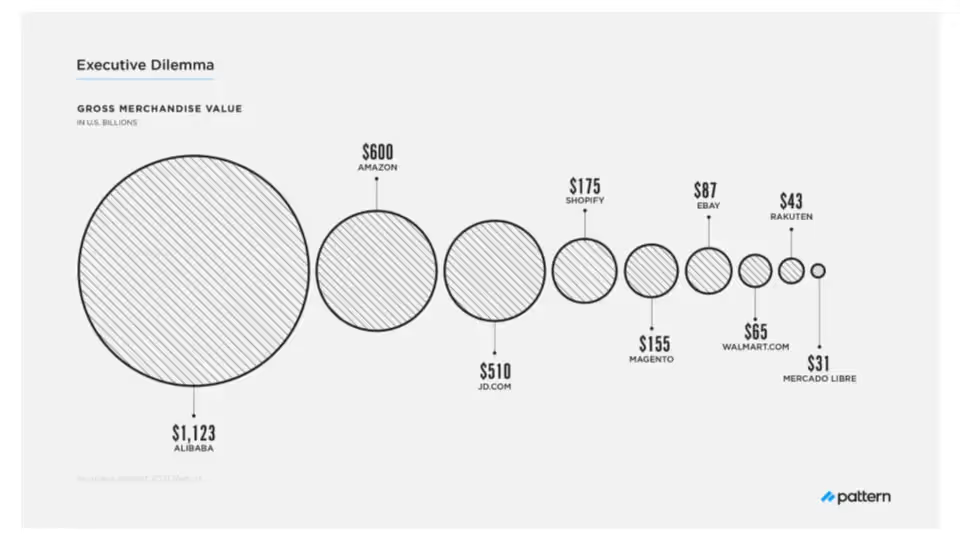Where Should Your Brand Expand to Internationally?
There are exponential opportunities on global marketplaces and a great way for a brand to expand their entire product portfolio or just a few SKUs. Explore these opportunities.
Your product is selling well, gaining momentum, and creating revenue in the United States so you may wonder, “Is it time to expand my brand internationally?” Going global is an exciting opportunity, with an opportunity to grow sales, especially if you have the resources to make data-based decisions that are necessary to help you succeed.
At Pattern, we’ve helped countless brands expand internationally with our proprietary international data, marketplace experience, and local expertise in all regions throughout the world.
Now let’s dive into the global marketplace landscape and your checklist to determine where your brand should go next.
Top Global Marketplaces
Knowing which marketplaces are available to expand to internationally is the first step to going global with your brand. Here is an overview of the biggest ecommerce marketplaces available in various regions throughout the world:

Global Marketplaces Opportunities
There are exponential opportunities on global marketplaces and a great way for a brand to expand their entire product portfolio or just a few SKUs. But prioritizing marketplaces requires knowing about the opportunities available, such as marketplace size and GMV.
Marketplace Size
Marketplace size indicates opportunity for your brand by region. Depending on your product, some markets may be better than others.

Alibaba is the “Jupiter” of international marketplaces, being much bigger than any other marketplace. Primarily Tmall, Alibaba dominates the global marketplaces with over 1,123 billion dollars in GMV. If a brand wants to jump into selling on Alibaba, here are a few things to keep in mind:
- Tmall functions based on a flagship store concept, rather than a Buy Box concept like Amazon.
- Customer/seller interaction is essential and shoppers want to chat with you 80% of the time.
- It is more of a technology platform, rather than buying and distributing goods.
Amazon comes in a far off second, with JD.com a close third. Amazon can be found globally in Canada, UK, France, Spain, Germany, Japan, Mexico, Brazil, and Australia. For North American brands, expanding to Amazon Canada could be a good way to start expanding your brand internationally because of its proximity and similar consumer demands and regulations.
GMV Value
The chart below shows the friction for US based brands entering global marketplaces, with green being low friction, yellow and orange being medium friction, and red being high friction.

Although the opportunity and Gross Merchandise Value (GMV) in China is high, there is slightly more friction for entering those marketplaces than in the U.S.and Canada. China and South Korea are green because they are a massive opportunity, but require a different strategy than selling in North America. The UK, Mexico, and the Middle East are also great opportunities for going global because of their low friction.
The regions in red, with the most friction, are those which may be hardest for US brands to expand to, simply because of various regulations, lack of digital marketplaces, or different demand for products.
Checklist to Expand Internationally
Building an international strategy must be done in strategic and methodical steps. Here are five things to consider when determining if your brand is ready to successfully expand internationally:
- Distribution by Country/Region: Do you have a high-level distribution strategy in place?
- Demand: Have you analyzed the demand for your product in the regions you are considering expanding to? Do you know the competitive set for your products in the region(s) and have data to assess traffic and conversion?
- Product Registration and Regulatory: What product regulations are required in the regions you are expanding to? Do you have the resources to manage the marketplace setup and administrative requirements?
- Localized Pricing: Have you done the research to figure out localized pricing? Do you understand currency and conversions at each stage of the product lifecycle?
- Localized Labeling: Does labeling need to be in a certain language? Include certain product information? Is your team equipped to handle all translations and regulatory conversations?
Expand Your Brand Internationally with Pattern
Expanding to international marketplaces is a growth opportunity for any brand but, without the right resources and strategy, it can be costly and overwhelming. Pattern’s global expertise and footprint make international growth on marketplaces frictionless and profitable.
At Pattern, we partner with brands in all regions to scale global growth, and provide the local expertise and resources to win in focused sales regions, and pre-built logistics to make your global scale easy. Ecommerce success, whether domestic or international, is accomplished through focusing efforts on the components of the ecommerce equation to reach truly profitable ecommerce growth.
Want to discuss your brand’s international checklist? Contact us.


.jpg)





.jpg)

